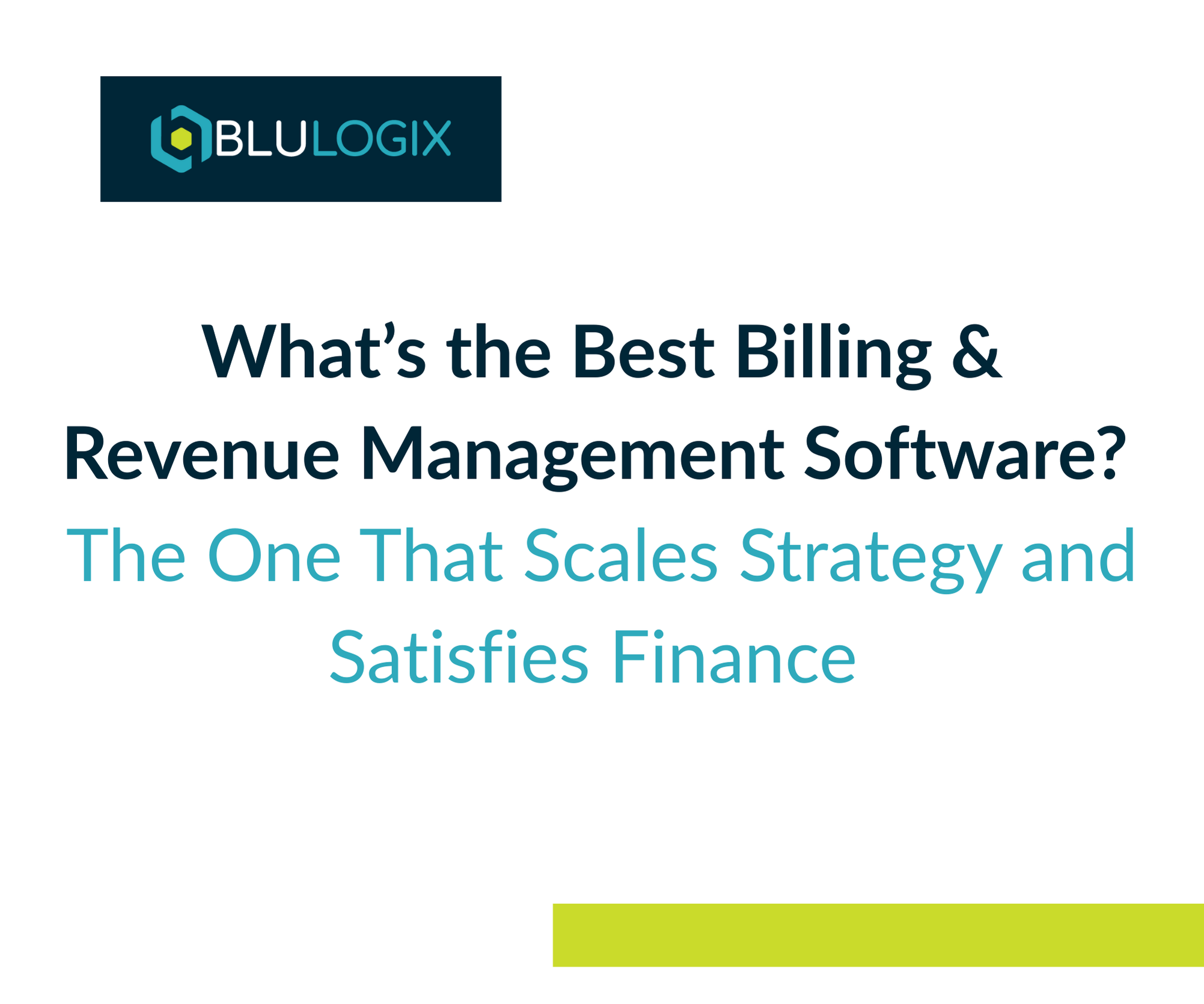How Can Revenue Management vs. BI and Analytics Help Grow My Business?
Revenue Management vs. BI and Analytics
In today’s data-driven business environment, organizations often use various tools and methodologies to manage financial performance. Two common approaches are Revenue Management and Business Intelligence (BI) & Analytics. While these methodologies may seem similar, they have distinct purposes and roles in shaping financial outcomes. Understanding these differences is key to leveraging each approach effectively.
Ready to see how BluIQ can transform your billing process and help you achieve integrated, automated, and accurate complex monetization? Schedule a demo with a BluLogix billing expert today and take the first step towards revolutionizing your revenue management.
The Purpose and Scope of Revenue Management
Revenue Management is a focused, targeted approach that emphasizes understanding and optimizing revenue-related processes. It encompasses not only tracking sales but also predicting trends, analyzing profit margins, and developing actionable strategies that enhance profitability. Revenue management turns revenue intelligence into actionable insights that inform decision-making and align with growth goals.
The primary purpose of revenue management is to maximize profitability through proactive adjustments to revenue streams. It involves predicting future revenue, analyzing financial trends, and continuously adjusting strategies to capitalize on growth opportunities and mitigate risks. By focusing specifically on revenue, this approach enables businesses to be more agile in their responses to market changes.
The Role of BI and Analytics
Business Intelligence (BI) and Analytics are more general tools designed to provide an overarching view of a company’s performance. BI typically involves collecting, processing, and visualizing historical data to provide insights into past trends and behaviors. The goal of BI is to help businesses understand what happened, identify key trends, and uncover patterns.
Analytics takes this a step further by using statistical techniques to interpret data, predict future outcomes, and support decision-making. However, analytics is often used to provide descriptive or diagnostic insights, which means they focus on describing past events or diagnosing the reasons behind them.
BI and analytics offer valuable insights, but they often stop short of guiding specific actions. They provide dashboards and reports that highlight data trends, helping organizations make informed decisions, but they don’t necessarily translate directly into strategic execution.
Key Differences Between Revenue Management and BI & Analytics
- Scope and Focus: BI and analytics are broad in their scope, often dealing with data across different functions and providing insights into overall performance. Revenue management, on the other hand, is laser-focused on optimizing revenue-related processes and driving profitability.
- Actionability: One of the major differences lies in how insights are used. BI and analytics provide useful information but often leave the “so what” unanswered. Revenue management takes these insights a step further by turning them into actionable strategies that improve financial performance and maximize revenue opportunities.
- Predictive and Prescriptive Capabilities: Revenue management emphasizes projection & prediction and prescription. It not only projects future revenue but also provides a roadmap for how to achieve revenue goals, focusing on ongoing adjustments and execution. BI and analytics may include predictive capabilities, but they tend to be less action-oriented compared to revenue management.
- Real-Time Execution: Revenue management integrates predictive insights with real-time decision-making, allowing companies to make quick adjustments to pricing, product offerings, and customer engagement strategies. BI tools typically provide historical analysis, which is valuable for understanding performance but not always useful for immediate action.
How to Use Both Approaches Effectively
While revenue management and BI serve different purposes, they can be highly complementary when used together. BI provides the foundational data needed to understand business performance and gain insights into customer behavior, while revenue management turns those insights into strategies that drive profitability.
For example, BI might reveal a trend in customer behavior—such as a dip in sales during a particular quarter. Revenue management can then use that insight to predict future impacts and recommend actionable strategies, such as adjusting price plans or specific customer underperformance.
By integrating BI and revenue management, businesses can gain a comprehensive understanding of their performance while also having the tools necessary to act on insights and maximize growth opportunities.
Revenue management and BI are both crucial components of a data-driven financial strategy, but they serve different roles. While BI provides a broad understanding of past performance, revenue management is more targeted, focusing on optimizing revenue streams and maximizing profitability. Revenue management emphasizes predictive insights, actionability, and continuous improvement, making it an essential tool for companies looking to drive growth and adapt to changing market conditions.
To succeed in today’s competitive environment, businesses must use both BI and revenue management effectively—leveraging historical data for insights while also employing targeted strategies to predict and shape future outcomes. By doing so, organizations can ensure that their revenue-related decisions are not only informed but also impactful, leading to sustainable growth and profitability.
Ready to see how BluIQ can transform your billing process and help you achieve integrated, automated, and accurate complex monetization? Schedule a demo with a BluLogix billing expert today and take the first step towards revolutionizing your revenue management.
Learn more

What’s the Best Billing & Revenue Management Software? The One That Scales Strategy and Satisfies Finance

Features That Power Complex B2B Contracts — And How BluLogix Delivers Them



